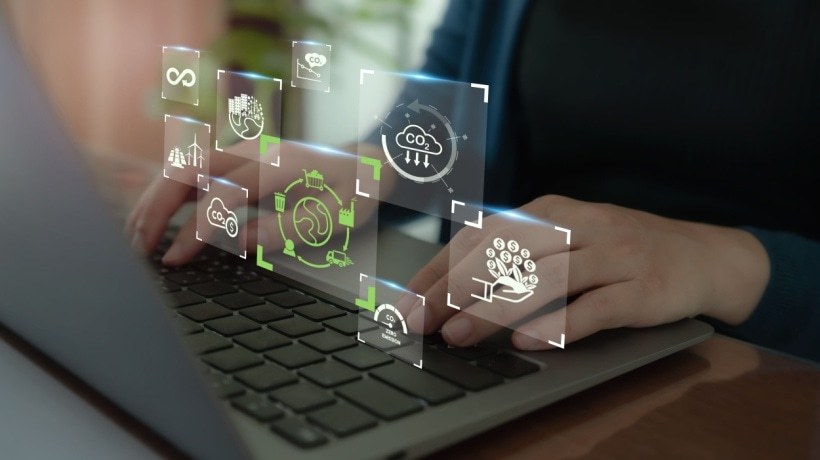
Net-Zero Emissions: The Role Of Digital Learning
Digital Learning For A Net-Zero Future
Climate change is one of the greatest challenges to our generation and the world’s pledge to reach net-zero emissions by the mid-century is driving change across the board. Governments, businesses, and societies are uniting in an effort to reduce emissions and achieve sustainable decisions. In order to reach those ambitious goals, though, it will take more than technology and policy, more than just a change in awareness, skills, and behavior on a global scale. That is where digital learning comes in.
By facilitating learning, reskilling, and sharing knowledge at scale, digital learning enables organizations and individuals to grasp their contribution to the net-zero path while empowering them with the means to act efficiently. Let us see how digital learning aids in accelerating global sustainability efforts.
1. Increasing Awareness Of Climate And Sustainability Issues
For most workers, stakeholders, and citizens the term “net zero” remains theoretical. Digital learning has the potential to close this gap by providing easily accessible, interactive, and informative content outlining what net zero is important, and how certain industries and individuals can help achieve emissions reductions.
Microlearning modules, gamified learning, and interactive infographics can make complex subjects like carbon accounting, renewable energy, or sustainable supply chains easy to understand. These materials can bring climate literacy to the mainstream, making sure that sustainability objectives don’t become isolated within leadership groups but are comprehended by the entire workforce and society.
2. Upskilling And Reskilling The Workforce
A low-carbon economy calls for a green-skilled workforce—engineers who are knowledgeable about renewable energy technologies, managers who can develop sustainable business projects, and many other green jobs. The International Labor Organization (ILO) calculates that 24 million new jobs can be generated worldwide by the green economy by 2030, but only if they have suitable skills.
Digital learning offers the scalability and flexibility required for fast reskilling. Online certification, simulations, and courses enable professionals to acquire new skills without having to quit work. For instance:
- Factory workers can be trained on energy-saving production techniques.
- Logistics personnel can learn route optimization methods to lower fuel usage.
- Business executives can study ESG frameworks and sustainable finance.
By integrating sustainability-oriented training into staff development programs companies guarantee that their employees develop to follow net-zero standards.
3. Promoting Behavioral Change
Policies and technology won’t help achieve net zero without profound shifts in behavior at the organizational and individual level. Digital learning is especially well-suited to bring about such change through individualized learning journeys that connect people and practice.
For example scenario-based learning may illustrate to employees the repercussions of wasteful energy habits compared to being environmentally friendly. Gamification may incentivize workers to finish sustainability challenges like reducing paper consumption or inspiring green transport means. These put sustainability into daily choices, building long-term behavioral modification.
4. Sharing Global Knowledge And Best Practices
Climate change is a transboundary issue that requires cooperation. Digital platforms enable sharing of knowledge between governments, industries, and academia from across the world. Webinars, online forums, and virtual workshops bring experts and learners across geographies together to share best practices in renewable energy, carbon capture, sustainable agriculture, etc.
This knowledge transfer makes sure that developing economies, which are mostly the most climate-vulnerable, have access to the same learning material as developed economies. This equalization of knowledge hastens the world’s shift towards net zero while fostering inclusivity.
5. Supporting Compliance And Reporting
As governments and investors are demanding transparent reporting of sustainability performance metrics, organizations are being nudged more and more to report in accordance with guidelines and regulations like the Paris Agreement GRI (Global Reporting Initiative) and TCFD (Task Force on Climate-related Financial Disclosures).
eLearning solutions can train employees in compliance processes, environmental disclosure guidelines, and green purchasing methods. By providing teams with required knowledge, organizations not only comply with regulations but also enhance their credibility among stakeholders.
6. Lessening Learning’s Carbon Footprint
Ironically, conventional face-to-face training tends to come with a large carbon cost through travel, accommodation, and paper materials. Digital training addresses this in a direct way by providing training remotely. The online learning platforms eliminate the logistical need for physical resources, reducing emissions while continuing to provide high-quality education. When integrated with technologies such as AI-powered personalization and VR-based immersive learning, digital training not only becomes more environmentally friendly but also more interesting and effective.
7. Fostering A Culture Of Sustainability
Digital learning’s most effective application is the ability to codify sustainability into the organizational culture. eLearning solutions beyond compliance or technical training can advance environmental stewardship and social responsibility values at all levels of a firm. By making training on sustainability an ongoing process instead of an episodic one, organizations foster a culture in which employees believe they have the freedom to innovate, take the initiative, and connect their day-to-day work to the overall cause of reaching net zero.
Conclusion
Meeting global net-zero emissions isn’t a technological or policy challenge—it’s a challenge for humans that demands awareness, skills, and action. Digital learning is particularly well-placed to close knowledge gaps, retrain the workforce, promote sustainable behaviors, and make essential information available to all around the world.
As governments and organizations make ambitious climate commitments, digital learning investments are no longer a choice but a strategy imperative. Through the use of eLearning not only do we speed up the shift towards a low-carbon economy but also make the journey to net zero inclusive, scalable, and meaningful for future generations.
Source link




